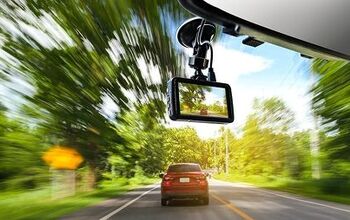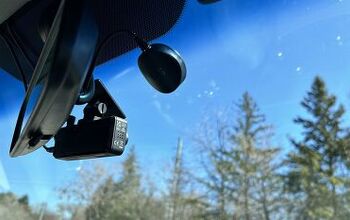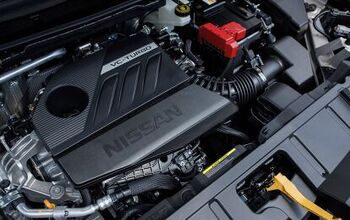How To Hardwire A Dash Cam
Dash cams are great tools for protecting your interests when you’re on the road. If you only use your dash cam on occasion, it makes sense to use your vehicle’s accessory plug-in on the dash to run the camera. However, if you intend to keep the camera in place all the time, it makes more sense to hardwire the dash cam to your vehicle’s power supply. Not sure you know how to hardwire a dash cam? No worries, it is easier than you think.
AutoGuide.com thanks Vantrue for sponsoring this Dash Cam Buyer’s Guide Series
Why Hardwire?
There are a couple of solid reasons to hardwire your dash cam. For starters, it makes sense from a consistency factor in that you will always have a constant power supply to the camera. Anyone who has ever used the 12-volt adapter plug-ins knows that the plug can wear out and cause you to lose power. It is just a matter of fact that things wear out, and the plug being in use often can lead to an inefficient contact between the camera and the battery, causing yet another reason to consider a hardwired cam. That can lead to a battery drain, and if your car is set so that accessories lose power when the key is turned off, you can lose use of the camera if the car isn’t running. That isn’t necessarily an issue all the time, but there could be an instance where you’d like to have a recording of events taking place when the car is turned off.
If you unplug the dash cam often, the plug itself can wear out and even, over time, come apart. If you’ve ever had a plug come apart as you’re pulling it out from the adapter, in your dash, you know that it can be a major pain to both extract the remaining bit of plug, as well as replace it. Again, this isn’t a common issue, but it can happen.
Getting Started
You can simply run a wire with the right plug for your camera down through the dash and firewall of your vehicle, and hook it directly to the battery terminals. But because you can do something doesn’t mean you should, and this is definitely the case here. Running direct to the power source will do some bad things, like cause a constant drain on your battery, and it also lacks any kind of protection for power surges to your dash cam, which can cause it to go from functional to inoperable in a matter of milliseconds. No one wants that.
For the sake of your vehicle’s electronic systems as well as your dash cam, you must run some form of breaker between the battery and the camera. Before you start running wires or anything else, make sure you have the proper breaker or fuse, and know where you will have it along the way.
The easiest way to find the right kind of fuse/circuit breaker for your dash cam is to go directly to the manufacturer for one. For example, Vantrue makes kits for hardwiring all of the dash cam models they sell. Each kit has the proper kind of plug-in for the camera, as well as the proper in-line surge protection for the camera. Most have voltage meters, too, so you can check your power system’s health along the way. Knowing how many volts are being drawn also lets you know when the voltage is decreasing, which can be indicative of a power draw, failing battery or other issue.
Routing The Wires
Most vehicles have a spot on the firewall that allows for cables and wiring to pass through into the engine compartment. The first step in any hardwiring job, after you acquire the right wires, etc, is finding the access point and figuring out how you will run the wires through the dash to that point.
This can seem like a daunting task, and it can also be a little stressful. Routing the wires is often the hardest part of any project like this. Taking your time and seeing where you have access to space behind trim pieces and through the dash of your vehicle is vital and can make things a lot less stressful.
Part of the appeal of hardwiring a dash cam is to hide all of the wiring and keep your vehicle’s appearance clean and “factory fresh.” We recommend you place the dash cam where you want it mounted and then slowly and methodically work the wires into place. Don’t be afraid of trial and error. Moving pieces of trim and other parts can be tricky, but once you get started, it is easier than you think.
One easy access route in some vehicles is to run the wires down the passenger side pillar and into the dash, routing the wires behind the glove box. Gaining access to the space behind the glove box is easier than you think, with it often being a simple hook. FYI, this is also often the location for your vehicle’s cabin air filter, so it is a good time to check the filter and replace or clean it as needed.
If your wiring has a meter reader, keep it in an accessible area. It can be in the engine bay, or in a spot in the dash that you can reach. This gives you access to the fuse/circuit breaker and lets you check the voltage.
Power Hook Up
While you can run your wiring to the battery directly and hook it up to the accessory terminals, the best option would be to run the wires to your vehicle’s fuse box and use an open slot for attachment. Then you’d add the correct fuse to the system and away you go. It might seem redundant to have the fuse box and an inline fuse on the wiring, but it gives you more protection. Running to the fuse box also decreases the possibility of a power drain.
Your vehicle’s manual should have a diagram of the fuse box for you to follow. If not, there can also be one built into the fuse box lid. If you’re coming up empty on both counts, try searching for a diagram on the internet. You have to know what slots are available and what the voltage will be before you attempt this.
As with anything electrical, if, at any point along the way, you feel unsure or uncomfortable with wiring the dash cam into your vehicle, consult a licensed mechanic. While we feel it is a task that anyone with modest mechanical ability can tackle, if you’re not sure, pay a professional to do it for you. It is always better to be sure when your vehicle’s reliability is a question.
More by AutoGuide.com Staff
































Comments
Join the conversation
I've gotten adapters that go between the car's rearview mirror and the car's wiring plug; they provide a place to connect the power for the dash cam without running the wires all over the place. It's not quite as 'clean' of an install but who looks at the wiring on the back of their rearview mirror?